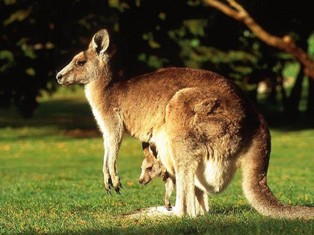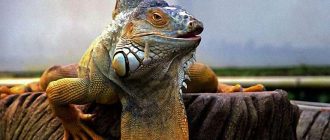Interested in the origins of marsupials in Australia? Learn more about Australian marsupials and their origins from North America…
It is commonly known fact that the marsupials evolved in North America and then moving along in a migratory pattern went to South America and finally reached Australia through Antarctica.
This migratory thread occurred during the time the southern continents were a composite whole and eventually the marsupials in Australia broke into different groups covering 140 known species today. Some of them are also located in New Guinea, which was at one time connected physically to Australia.
Description of Australian Marsupials
A marsupial is defined as the pouch that some of these mammals carry. Although some of them do not have a permanent pouch there are very few that do not have this feature.
Very similar to mammals, marsupials give birth to live young babies and are covered in fur with the young are fed by the mother through suckling. The gestation period is very short and commonly results in the birth of underdeveloped young ones.
They are blind at birth and without fur, with partially developed forelimbs that have claws. These allow the young to claw into the pouch and attach to the teat that allows them to continue developing.
Interestingly enough the short pregnancy is offset by a long lactation time. That is the time when the young ones remain in the pouch of their mother.
Depending on the newborns stage of development, the composition of the mother’s milk changes from one development stage to the other. This provides the nourishment required by the young ones to grow into a fully formed marsupial.
Classification of Australian Marsupials
The marsupials that inhabit Australia can be classified at the family level of taxonomy. This level is a primary grouping with the features identified within it for each level of the family.
Popular Marsupials in Australia
Marsupials evolved in North America and found their way to South America from where they moved into Australia via Antarctica when the southern continents were joined as Gondwana.
During the time the young remain in the pouch and the composition of the milk produced by the mother changes depending on the developmental stage of the young.
One of the most popular and universally recognized marsupials from Australia is the koala. The only representative of its family it can be accurately described as related to the wombats. The marsupials called koala bears feed on eucalyptus leaves and most of their days are spent sleeping.
Their natural habitat is in the trees. While there their marsupial or the pouch opens backwards. Another category of marsupials in Australia includes the wombat, which falls in the family of Vombatidae. The three species that make part of this family include the hairy nosed northern and southern wombats along with the common wombat.
These marsupials have very sturdy limbs and can dig deep burrows to sleep in, raise their children and hibernate. They eat grass and herbs and are active generally in the night. The Numbat belongs to the family of Myrmecobiidae and is the sole representative of that family. It is located only in Western Australia and its numbers have been in decline.
Even though it is diurnal the activity is dependent on the temperature of the soil because it lives underground. You can see it active in the daytime in the winter while in the summer its activity is concentrated in the late afternoon and morning time.
It is one marsupial that rests in the burrows and hollow logs if required at night and it does not have a pouch. The distinct bands of white colour on its lower back help one to identify it.
Bandicoots and Bilbies are rat sized marsupials. They have long snouts and sharp pointed teeth and are nocturnal creatures. The two species that are found in this category are the Peramelidae Bandicoots and the Peroryctidae New Guinea Bandicoots.





